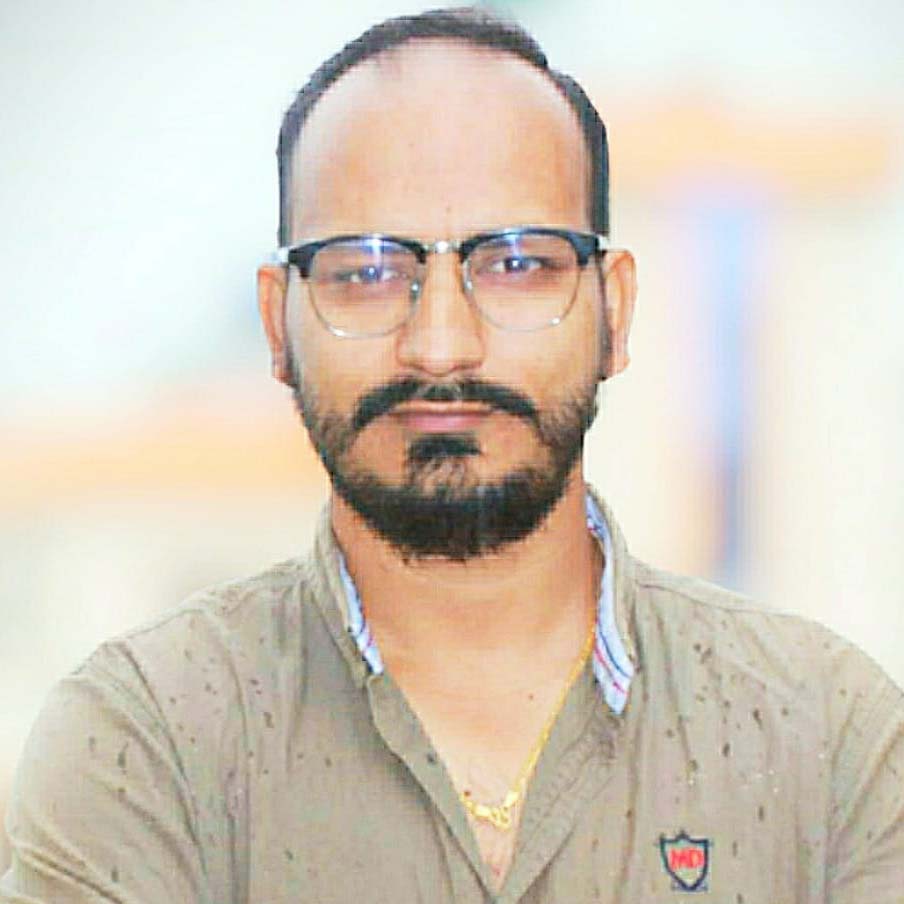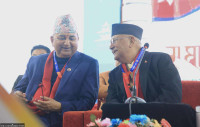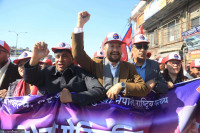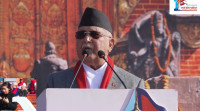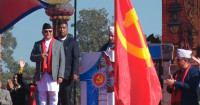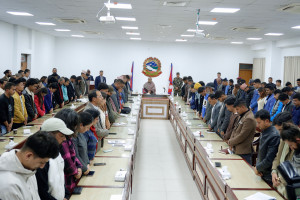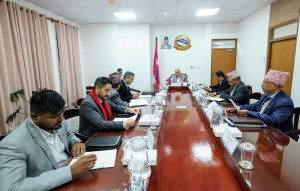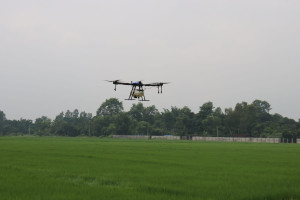Politics
RPP demonstration peaceful but much smaller in size
Party chief Rajendra Lingden calls for a new consensus among all forces, reiterates release of leaders detained after March 28 violent protest.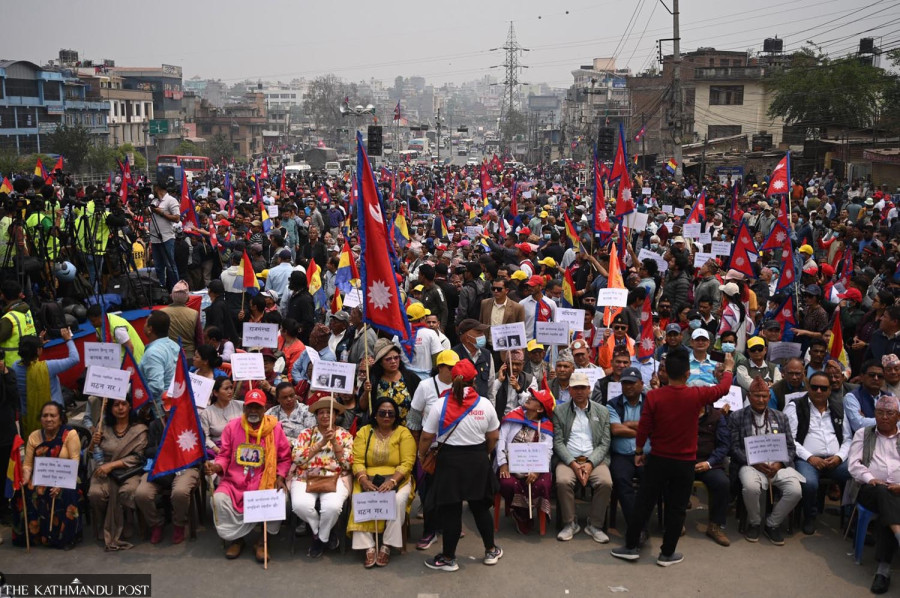
Purushottam Poudel
The Rastriya Prajantra Party (RPP), the fifth largest in Parliament and advocate for Hindu kingdom, organised a protest in Balkhu, Kathmandu, on Tuesday with the slogan ‘Let’s change the system to change the situation’.
Organised by the party’s Bagmati Province Committee, the protest, coming in the wake of a violent royalist demonstration 11 days ago, did not see a significant presence of supporters.
When the monarchist campaigners’ protest under their Joint People’s Movement on March 28 turned out to be anarchic, the local administration on Tuesday was on high alert and the protesters’ turnout was not significant.
But the party leaders interpreted the event in various ways. Through Tuesday’s rally, “we aimed to dispel the negative message sent by the March 28 demonstration,” said RPP leaders. When the royalists’ protest that day turned deadly, with two persons killed and dozens injured, supporters of republicanism tried to portray the monarchist forces as “barbaric”.
“More than the number of participants, the important thing was the message we wanted to give, and we believe the event has given out the right message,” said Dhurba Bahadur Pradhan, the RPP vice-chair.
According to the administration, Tuesday’s protest saw around 2,500 to 3,000 participants, a smaller show than the one on March 28.
The administration earlier had said that when former king Gyanendra Shah arrived in Kathmandu from Pokhara on March 9, at least 10,000 people had gathered to welcome him. The subsequent protest was said to be smaller.
Asked whether the large crowd that had turned out to welcome the former King encouraged the royalist force to be aggressive, RPP leader Pradhan disagreed.
“The number of participants would naturally differ when the King himself is present,” argued Pradhan, pointing to the crowd size on March 9 when Gyanendra was welcomed back from the months-long tour of western Nepal. “However, Tuesday’s protest was scheduled before the king travelled from Pokhara to Kathmandu.”
Despite the support of the Joint People’s Movement Committee that waged the violent protest, the RPP demonstration on Tuesday was smaller. The number of protesters fell short of what party leaders had previously claimed. Even some like-minded parties, such as the Rastriya Prajatantra Party-Nepal, did not extend their support to the RPP protest on Tuesday.
RPP-Nepal, however, cited the issue of flags as the reason. Earlier, a meeting of RPP-Nepal’s working committee had decided that the party would take part in programmes organised by like-minded parties advocating for the restoration of monarchy. However, the party has adopted a policy of not participating in events where banners and flags of other parties are displayed.
Although RPP initially sought permission from the administration to hold its demonstration at Bhrikutimandap, the authorities declined the request, citing ongoing protests in the area, and had allocated the Sifalchaur or Balkhu for their protest. The party had chosen Balkhu.
Addressing the rally, RPP chair Rajendra Lingden stressed the need for a new understanding that accommodates all political forces including the royalists. Lingden argued that the country can “no longer move forward in the current state”.
“That is why we need a new understanding for the country. Let us forge a new consensus peacefully among all political forces. Let us build a unique system, taking the good elements of both the past and the present,” said Lingden, referring to the 1990 constitution that balanced constitutional monarchy and multiparty democracy.
He called for an accommodative new system that gives space to every force from monarchy to the republicans.
The RPP reiterated its demand for the release of party Vice-chairman Rabindra Mishra and General Secretary Dhawal Shamsher Rana, who were arrested after the violent Tinkune protests on March 28.
The Kathmandu District Court on Tuesday extended the remand of Mishra and Rana, along with 18 others, by 15 days to continue probe into their alleged instigation of violence.
The party denounced the use of “excessive force” by the government on March 28. Both the government and the royalist camp have traded accusations of inciting violence, which led to the deaths of two persons, including a TV journalist.
Lingden on Tuesday held the prime minister, the home minister, and the police chief responsible for the Tinkune-Koteshwar destruction. He accused Nepal Police Inspector General Deepak Thapa of acting as a co-chair of the youth wing of the ruling CPN-UML.
The current police chief turns out to be a co-chair of the UML's Youth Association Nepal, Lingden said at Balkhu. “We found tear gas shells and canisters with 2008 expiry dates. The police chief, shamelessly representing the UML, has the audacity to question how the tear gas they used expires. The police must act as police, not as an affiliate of any political party.”
The RPP is a small political party with 14 seats in the House of Representatives. In the 2022 election, it won less than 6 percent of the total votes.
Analysts say that despite its small voter base, the royalist movement has an appeal for the people frustrated at the current state of corruption and the hardships of ordinary citizens.
While passing the new constitution in 2015, the three major parties did not incorporate public feedback on the charter gathered by Constituent Assembly members from across the country. The royalists argue that the people had overwhelmingly supported monarchy and the Hindu state.
“The RPP is now attempting to capitalise on these sentiments and position itself as a representative of that dissatisfied segment of society,” said Chandra Dev Bhatta, a political analyst.
“As the traditional parties who had a kind of social contract with the people following the second people’s movement failed to fulfil the promises made to the people, the RPP has been attempting to attract those who now aspire for a new social contract,” Bhatta said.
“Despite its diminishing vote share, the public has shown interest in its agenda, suggesting a growing interest among certain sections of society towards the alternative social contract it is trying to present.”




 13.12°C Kathmandu
13.12°C Kathmandu